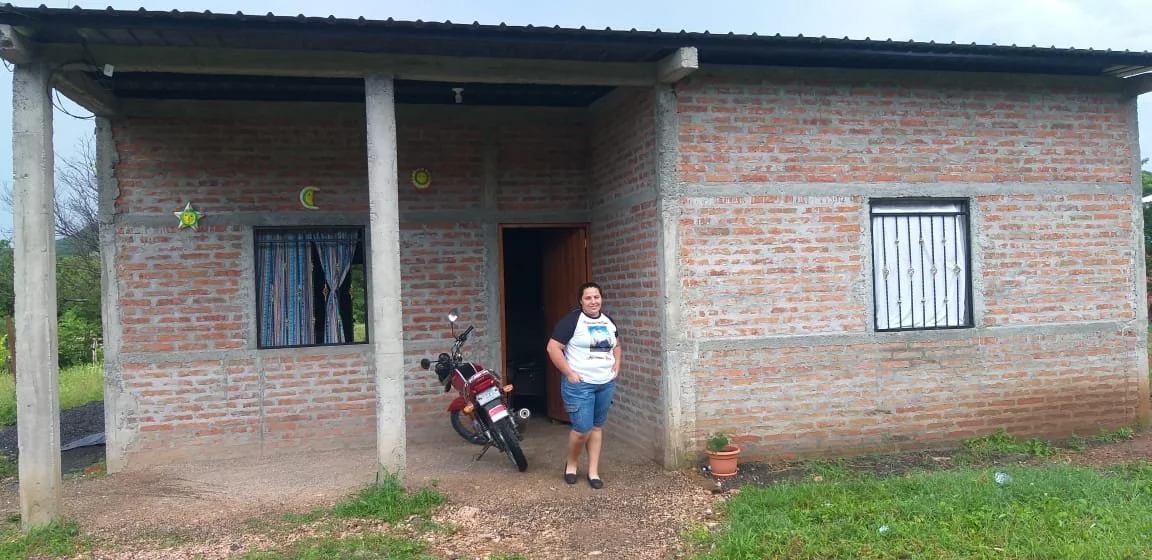Informal housing settlements are typically thought of as places where people live temporarily, and lack basic services such as access to running water or electricity. However, through our work, we know that the definition of informal housing is much broader.
In the communities where we work in Nicaragua, there is a general lack of opportunity. We mostly work in rural areas where the housing and rental market isn’t very strong. Access to running water or electricity can be challenging to come by, and many of the women we work with build their own homes. There are also few job opportunities, with most women earning below $3 per day. As a result they have to use whatever materials they can find to build their own home.
The most sought after materials are brick and concrete however they are very expensive, so most end up using tin and wood, or even plastic, sticks and dirt floors in extreme cases. Because of this, some of the structures can be unsound. This can be dangerous in a climate like Nicaragua’s which is prone to large amounts of rainfall and sometimes hurricanes. With both a lack of opportunity and adverse conditions many of the women can spend 10 - 15 years building their homes.
Carolina was finally able to finish her home after many years of construction and accumulation materials.
Therefore, it is unsurprising that many of the women we work with use their community savings group as well as their own savings to make home improvements. Ernestina’s home in San Isidro was badly damaged during hurricane Eta, November 2020. Her home was made of a combination of wood and tile, which collapsed when the hurricane hit. When Ernestina joined our San Isidro savings group her priority was improving her home. She began selling clothes and homewares door-to-door in neighboring communities. With help from our workshops and her daughter, she earned and saved $340 in 2021. With the savings and small community, she began to repair her home. Now, her home is rebuilt out of bricks and was able to survive the recent hurricane Julia.
Ernestina and her home in San Isidro, Nicaragua.
Lucinda, another member of our San Isidro group, used funds from her community savings group to expand her home. Prior to the expansion, Lucinda’s disabled mother had nowhere to permanently live, so would spend each week in a different home. With loans and savings Lucinda added another room, which means her mother now has a place to live.
In our Soledad de la Cruz community, Doña Conchita added a concrete floor and expanded her kitchen. When she first joined, she was making less than a dollar per day from her baking business, and she was struggling to make ends meet. After joining the community savings program, she was able to save enough money to install a concrete floor in her home - as opposed to a dirt floor. Dirt floors create damp conditions which can cause respiratory and skin infections. Adding a concrete floor can reduce infections by 90%. Doña Conchita was also able to save enough to build an outdoor kitchen for her baking business allowing her to increase her production.
In the communities where we work, most of the women are able to build their own homes and get access to electricity and clean water, but it generally takes a decade or more to finish. By joining one of our community savings groups and attending our workshops, many women are able to shorten the building time from 10 -15 years to a couple of years. This helps in the event of adverse weather and helps them to further their businesses.





